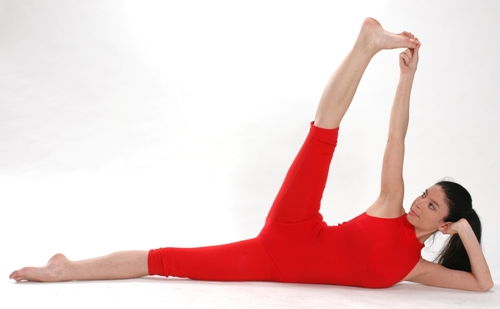How To Do Anantasana and Its Benefits | Styles At Life
Yoga is an ancient practice in India. Now a day, Yoga has been modernised a bit for sake of fitting it into lives of younger generations that is constantly battling with a hectic schedule. However, the very roots of yoga continue to remain the same. Given below in this write up is just a brief description of Anantasana. Anantasana is also known by many other names, those being Vishnu’s Couch Pose, Eternal One’s Pose, or Side-Reclining Leg Lift. While describing this asana, I don’t intend to replace any kind of expert opinion. You should always practice under a well trained instructor. Given that as a word of caution,-let us have a look at what basically Anantasana is all about…

A complete yoga session offers you, the following:
• Warm-up exercises
• pranayama : Pranayam refers to deep breathing techniques. It provides the practitioner with multiple benefits like weight loss, cleansing of airways, improving muscle tone, relaxation.
• asanas: That refer to poses of Yoga. Asana is a form of exercise in classical Yoga. Asanas, should be steady and firm yet comfortable and relaxed. It helps the practitioner become aware of their body, mind, and environment.
See More: Dhanurasana Bow Pose
Let’s move to describe the Anantasana in particular:
The word ‘Ananta’ means ‘never-ending’ or ‘infinite’. It is also called ‘Sleeping or reclining Vishnu pose’. Ananta is an alternate name of the Hindu Lord Vishnu, the Preserver, the infinite, who is believed to sustain the universe between the cycles of creation and destruction. Vishnu is believed to endow Yoga to the world. It’s also the name of the thousand-headed serpent also known as shesh Naga that serves as Vishnu’s bed
How to perform Anantasana?
- Lie down straight on your back
- Turn towards your left.
- Lift your right leg up at a 90 degree angle. Now, place your left hand below your head to support it.
- Now, raise your right and try to grab the toes of your right leg with your Right hand.
- Hold on in this position for about 20 seconds.
- Turn towards the other side and repeat the same sequence of movements
- Lie in shavasana and relax.
Initially, you might face some difficultly in balancing your body in this position. For sake of convenience, you may practice this asana against a wall to maintain balance.
In this side lying pose, We Consciously create an asymmetry in the respiratory mechanism that can be helpful in getting rid of deeply seated breathing habits.
See More: Bhujangasana Cobra Pose
Who should not practice this asana?
People suffering from neck stiffness, sciatica pain, slip disc issues and spondylitis problems and pain should consult a doctor before practicing this asana.
Anantasana has various Benefits to offer:
- This asana helps to tone your abdominal muscles.
- It gives a good stretch to the entire body.
- This asana strengthens shoulder muscles.
- Stimulates blood circulation your heart and brain increases.
- It helps with digestive problems too.
- This asana helps in relieving mental anxiety and stress.
- It is helpful in treating disorders related to the urinary bladder, uterus, prostrate, testes, and ovaries.
- It is also beneficial in correcting menstrual disorders and edema of the arms or legs.
Anantasana can benefit all yoga practitioners, no matter what their age or level. While practicing this asana, the more stable your pelvis is, the easier it will be to maintain balance. Maintain a straight spine.
See More: How To Do Padmasana
The preparatory asanas for Anantasana are:
Parighasana, Supta Padangusthasana and Utthita Trikonasana. The follow-up asana is Adho Mukha Svanasana.
Variations for Side-Reclining Leg Lift:
• Ardha Padma Anantasana
• Dwi-Pada Anantasana
Image sources: 1